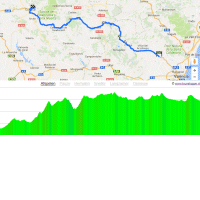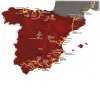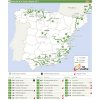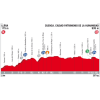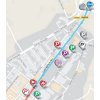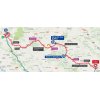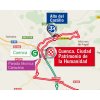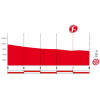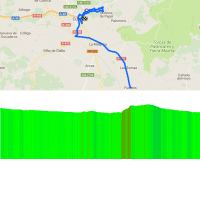Departure place Llíria is famous for its music. Two rivalling bands (wind orchestras) are going head-to-head like Alejandro Valverde and Joaquim Rodriguez in their best/worst days.
The pack heads west and shortly after leaving the town the riders enter the Castile-La Mancha region. At kilometre 51 the top of the Puerto La Motalbana comes with the first KOM-points of the day and Alto de Santa Cruz de Moya is crested at kilometre 88.7.
On rolling roads the riders travel to Cuenca. With 190 kilometres done, they hit the city of 57,000 for the first time. Yet, as Cuenca is divided into two separate settlements with a new and an old city this merely indicates that the finale is upon us. The old part dates back to Morish times and is surrounded by a wall, while it is located high across a steep spur, whose slopes descend into deep gorges of the Júcar and Huécar rivers. Small wonder the historic walled town is a UNESCO World Heritage Center.
Steep ramps lead from the new town to the old before the (bad) asphalt makes way for cobbles. In the picturesque streets the climb continues to El Castillo, which are the remains of an ancient Morish fortress. It sits high above the old and new town.
The climb up to the Castillo is 2 kilometres at 7.3%. After hitting the top and going under the old city gate a 3.4 kilometres false flat and a 8.4 kilometres drop takes the riders back to the finish in the new part of Cuenca.
The first three riders on the line take time bonuses of 10, 6 and 4 seconds, while the intermediate sprint (at kilometre 191) comes with 3, 2 and 1 seconds.
Read also: results/race report 7th stage 2017 Vuelta.
Vuelta 2017 stage 7: Route maps, height profiles, and more
Click on the images to zoom
